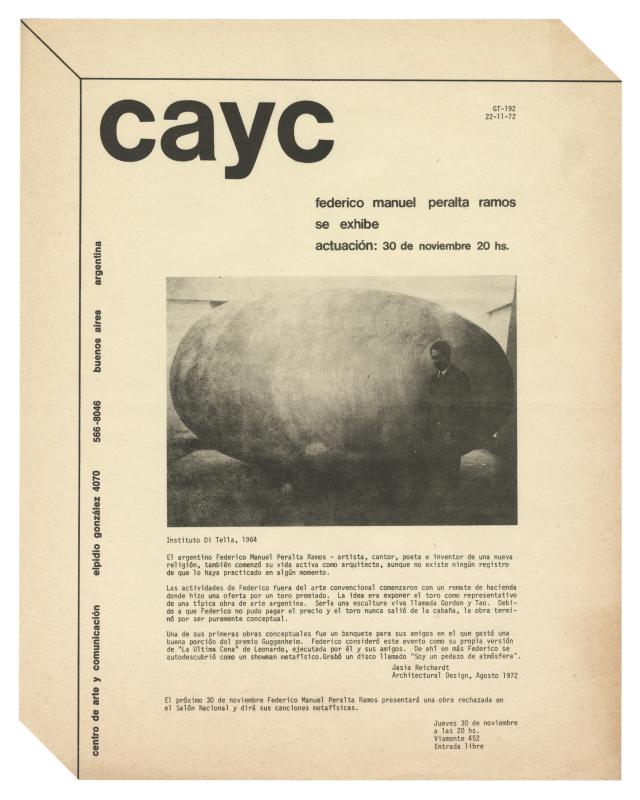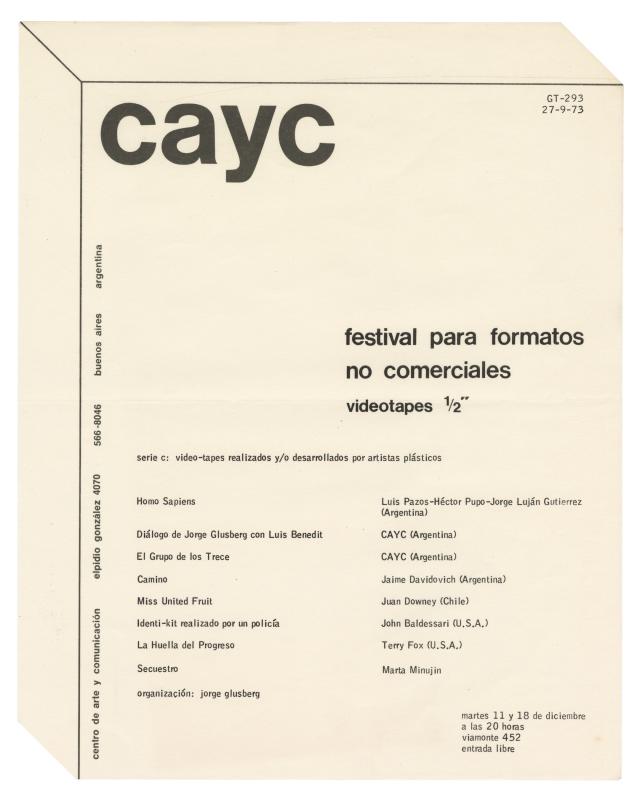Ever since it was founded, the CAYC (Centro de Arte y Comunicación), helmed by the cultural promoter, artist, and businessman Jorge Glusberg, was intended as an interdisciplinary space where an experimental art movement could flourish. The establishment of collaborative networks connecting local and international artists and critics played an important role in this process. The exhibitions shone a light on these exchanges, in which overviews of trends or individual artists provided an introduction to the innovations of international contemporary art and made Argentine and Latin American artists better known on the global scene.
Marta Minujín (b. 1943) was a key figure in avant-garde circles in Argentina in the 1960s. Since then, she has had a prolific career creating happenings, performance art, sculpture, painting, and video art. After spending several years shuttling between Europe and New York, Minujín returned to settle permanently in Buenos Aires in 1975, where she encountered the country’s highly volatile social and political situation. The death of Juan Domingo Perón on July 1 the previous year (during his third term as president) created a mood of utter institutional uncertainty. The government of his widow, who was also the vice president of Argentina, María Estela Martínez de Perón, was marked by a dramatic increase in violence, visible in the struggle between people of differing political stripes and in the activities of paramilitary armed groups, the major one of which was the Triple A (Alianza Anticomunista Argentina).
Artists looked at their country and saw nothing but hopelessness and instability. Minujín quickly understood what was going on and, with her friend Federico Manuel Peralta Ramos (1939–1992), started producing a number of works that reflect on conditions in Latin America at that time. At Glusberg’s invitation, she presented one of them at the CAYC for ten days in September 1975. Both these artists had already been involved with the Center on previous occasions. Peralta Ramos showed his work there in November 1972 (GT-192 [doc. no. 1476364]) and Minujín had been involved in various events since 1970 (GT-07 [doc. no. pending], GT-44 [doc. no. pending], GT- 293 [doc. no. 1476441], GT-485 [doc. no. 1476726]).
The text published in this newsletter—written in the satirical tone that defines Minujín’s works from New York and everything by Peralta Ramos—explains the idea of reinterpreting “failure” as a positive and liberating phenomenon. To that end, the article provides a genealogy that includes Futurist and Dadaist gestures as well as Argentinean idiosyncrasies. The work encourages the reader to identify as a “failure” (rated according to three levels) and to become involved with the project by interviewing Minujín and Agustín Merello, a professor of philosophy who had worked with the CAYC on other occasions (GT-210 [doc. no. pending] GT-224 [doc. no. pending], GT-225 [doc. no. pending], GT-249 [doc. no. pending], leading seminars and endorsing a “prospective” model that he defined as “the scientific anticipation of the future as a guide to action.”



